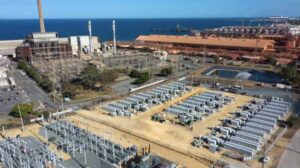The West Australia grid has set a new low for minimum grid demand, occurring not during the night when most might expect, but during the middle of the day when rooftop solar accounted for 44 per cent of underlying demand, making it by far the highest contributor to the grid at the time.
The new record low – 1,135MW – was set at 11am Perth time on January 4. Rooftop solar at the time was accounting for 935MW, so about 44 per cent of the total demand. The new low eclipsed a record set in October last year, which in turn had beaten an earlier record set in September.
The minimum lows are falling over rapidly as part of a fast-changing grid. AEMO, and the W.A. government, are concerned that if it falls too far it will put grid security at risk, which is why the Labor government has been so pro-active with its transformation task-force, and the release of its distributed energy roadmap earlier this month.
 That roadmap is designed to carve out a path that will include more community-based battery storage, to soak up the excess of rooftop solar at certain times, and the introduction of new inverter standards that will ensure that new rooftop solar installations have the capacity to be visible to the market operator, and to be “orchestrated” as part of virtual power plants if necessary.
That roadmap is designed to carve out a path that will include more community-based battery storage, to soak up the excess of rooftop solar at certain times, and the introduction of new inverter standards that will ensure that new rooftop solar installations have the capacity to be visible to the market operator, and to be “orchestrated” as part of virtual power plants if necessary.
New tariffs will also likely follow to try and moderate the peaks that are now emerging in the evening, when ramping rates caused by the setting sun on solar output, and the increase in early evening demand, can create new challenges for the grid operator
While the fast growth of rooftop solar is posing problems – and creating a greater “duck curve” as illustrated in the graph above – the language of the W.A. government, AEMO, and the network owner Western Power makes clear that they want to embrace the technology, and use it as an asset.
Less enthusiastic might be the supporters of coal generators, who are seeing their output increasingly marginalised as rooftop solar takes a bigger chunk out of they day-time output, although in the first quarter of 2020, the high temperatures in February saw overall demand increase, and coal increase its output at night-time in the sultry conditions.
But more wind farms are on their way, including the 212MW Yandin wind farm and the 175MW Warradarge wind farm, which on a grid the size of WA’s will make further inroads into the output of coal and gas, particularly if they deliver the bulk of their output – as promised – in the evening and night.











